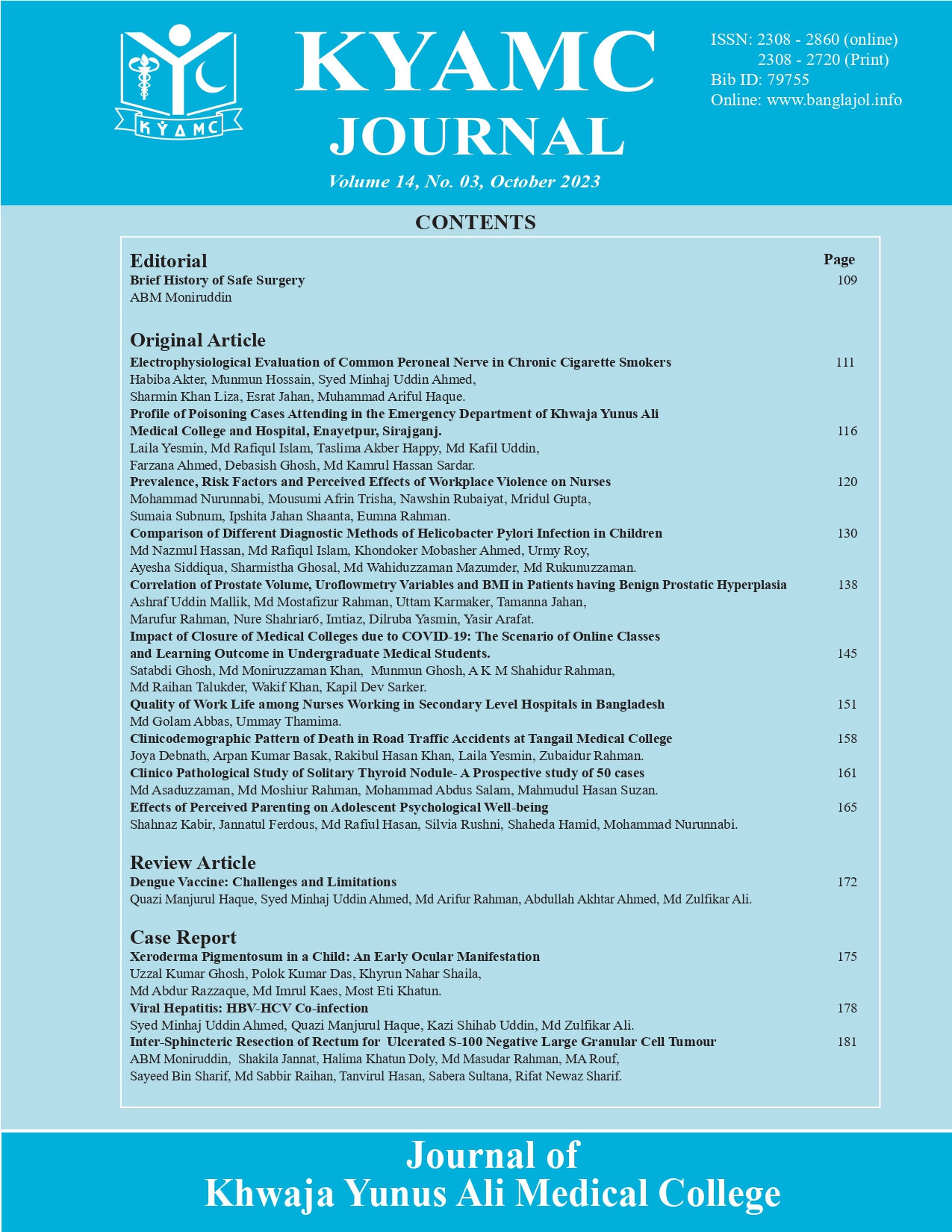Correlation of Prostate Volume, Uroflowmetry Variables and BMI in Patients Having Clinical Benign Prostatic Hyperplasia.
DOI:
https://doi.org/10.3329/kyamcj.v14i03.68562Keywords:
Benign prostatic hyperplasia, Transabdominal Ultrasound, Uroflowmetry variablesAbstract
Background: Benign Prostatic Hyperplasia (BPH) causing urinary obstruction is a common entity in a man over 40 years old. Enlarge prostate causes compression of the prostatic part of the urethra leading to bladder outflow obstruction, causes LUTs (lower urinary tract symptoms) of BPH and decreases quality of life.
Objectives: To find out the correlation of prostate volume, and BMI with Uroflowmetry variables, of patients having BPH symptoms.
Materials and Methods: A total of 44 patients having BPH symptoms, ages ranging from 48 to 85 years, who underwent transabdominal ultrasound and uroflowmetry in a standing position, were included in this study. The patients were divided into 4 age groups and 4 grades of prostate size for comparison. Height in cm and weight in Kg were recorded for BMI calculation.
Results: Among the patients, the mean age was 66.25, with a mean prostate size of 39.73 g, with a Qmax of 14.45 ml/sec, Qave 5.96 ml/sec, mean voided volume 327.14 ml and PVR 57.91 ml with mean flow time 61 sec.In age group l, there were 3 patients, ages ranged 40 to 50 years. In age group ll, there were 11 patients, age range 51 to 60 years. In age group lll, there were 17 patients, ages ranged 61 to 70 years. In age group lV, there were 13 patients, age range 71 to 84 years. In grade l of prostate size (prostate <30 g), there were 13 patients. In grade ll prostate size (prostate 30-<50 g ), there were 25 patients. In grade lll, prostate size (50- <85 g), there were 4 patients. In grade lV (prostate size is >85 g), there were 2 patients. No significant difference was found among 4 age groups and 4 grades of prostate volume. However, there was a weak correlation between prostate size and uroflowmetry variables without a significant difference.
Conclusion: There was a correlation between prostate volume and different uroflowmetry variables of age-related groups and grades of the prostate but the correlation was weak.
KYAMC Journal Volume: 14, No: 03, October 2023: 138-144.
Downloads
129
227
Downloads
Published
How to Cite
Issue
Section
License
Copyright (c) 2023 KYAMC Journal

This work is licensed under a Creative Commons Attribution-NonCommercial 4.0 International License.




